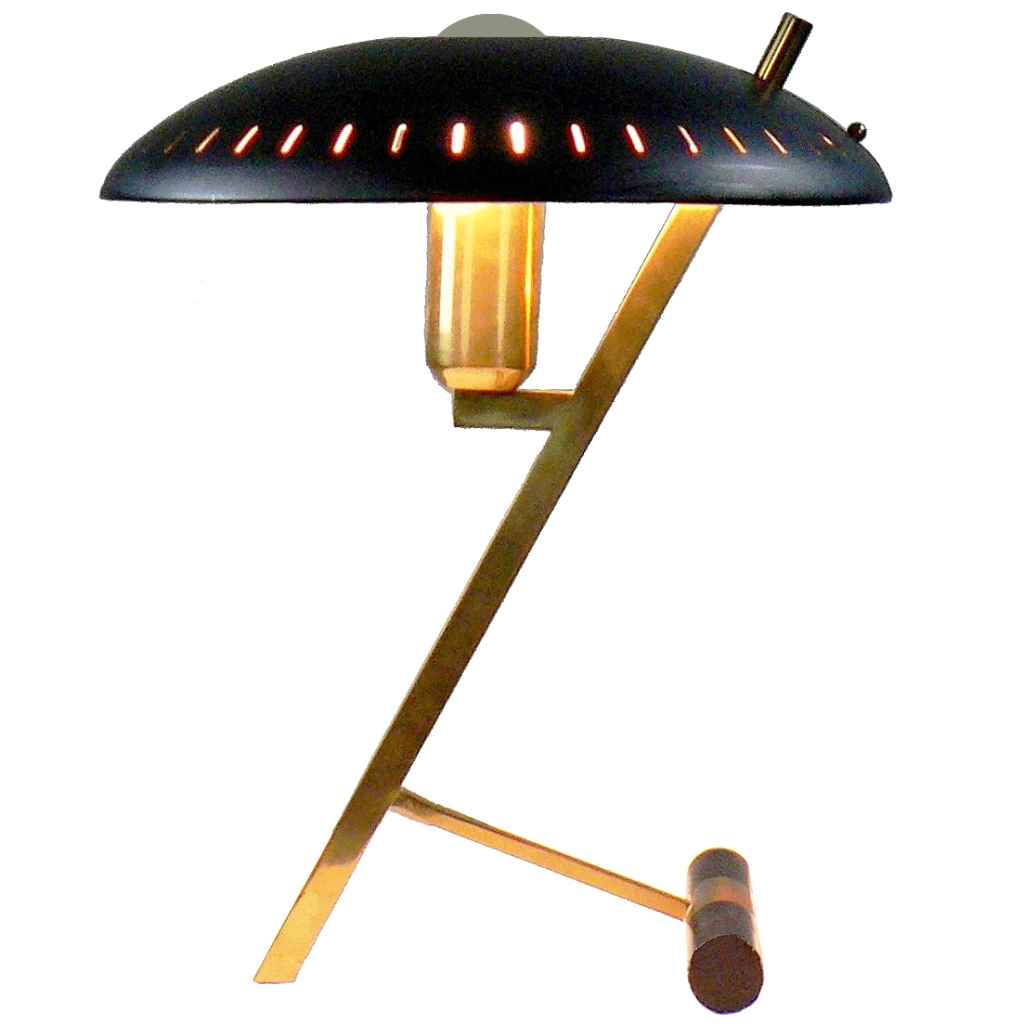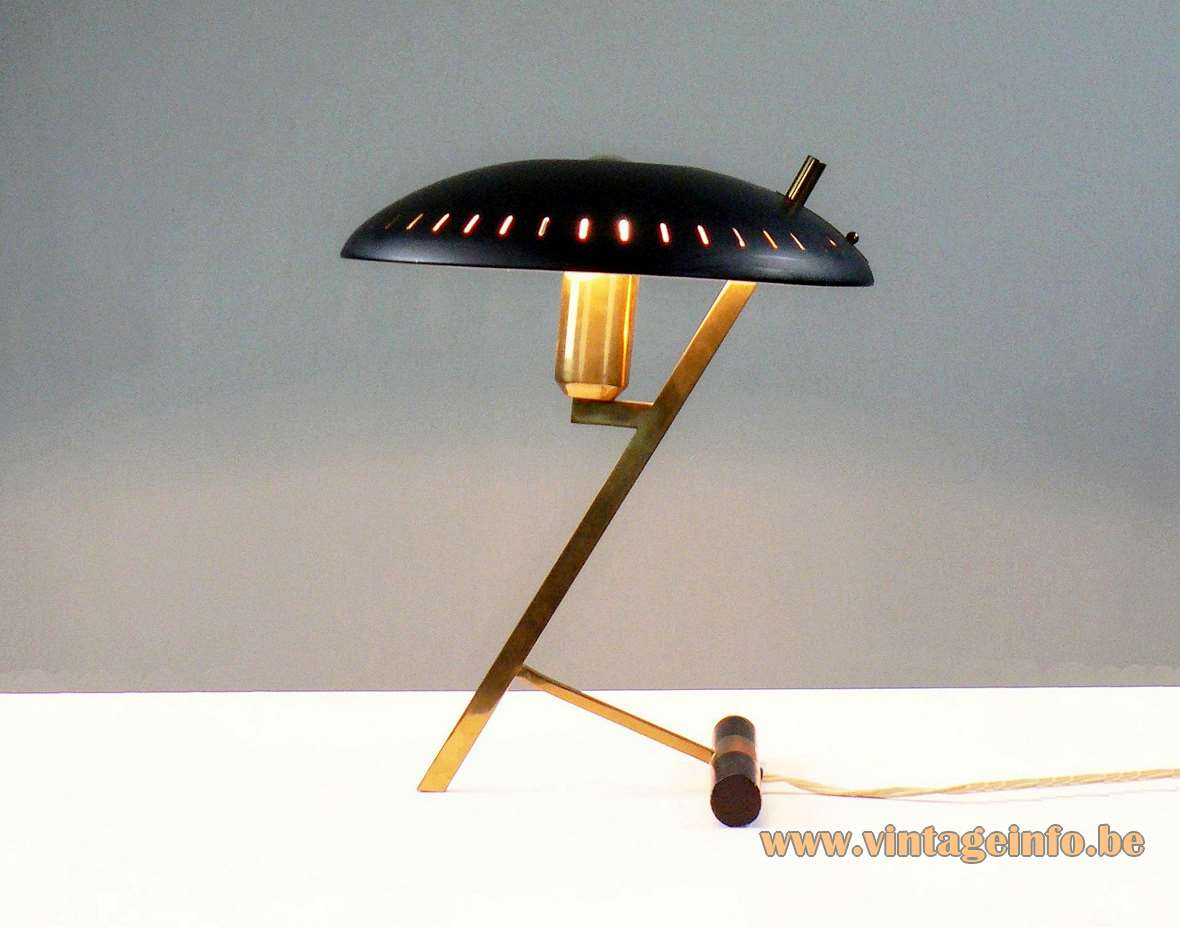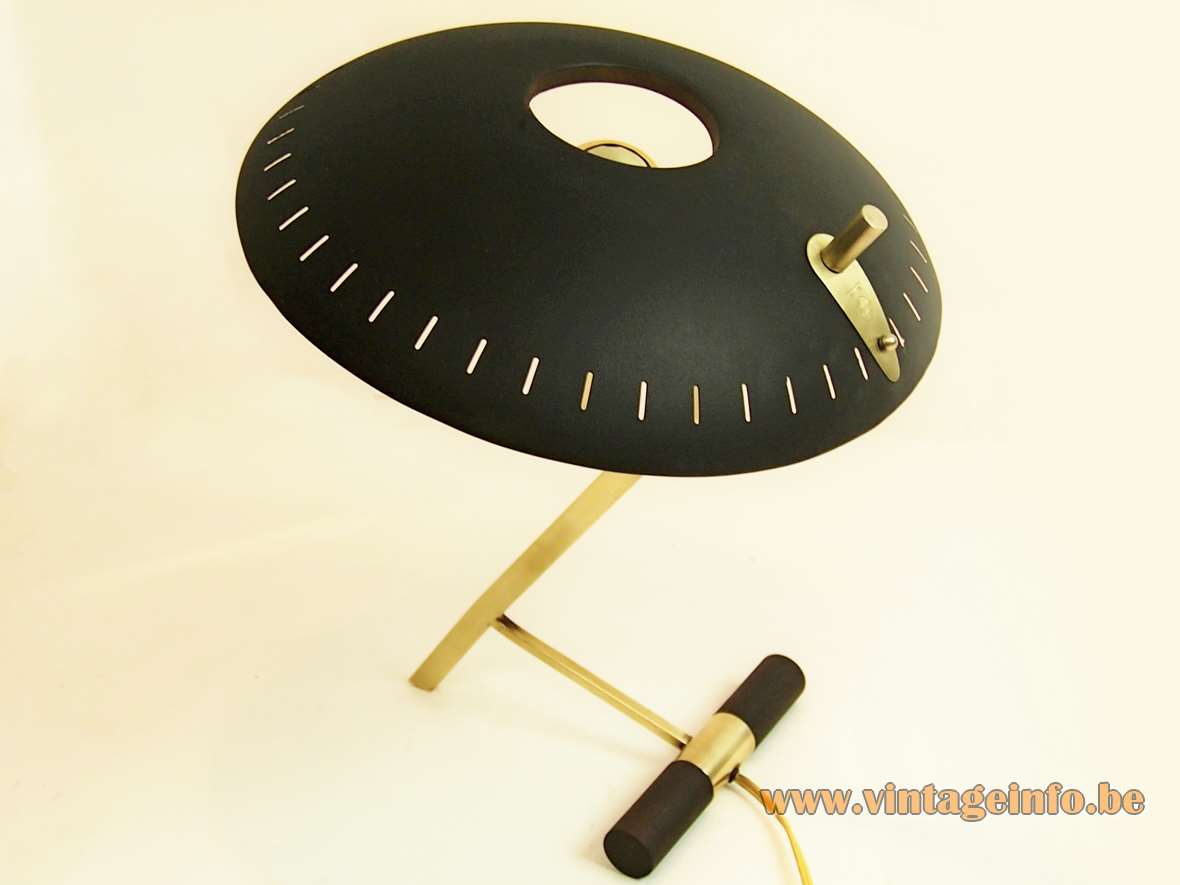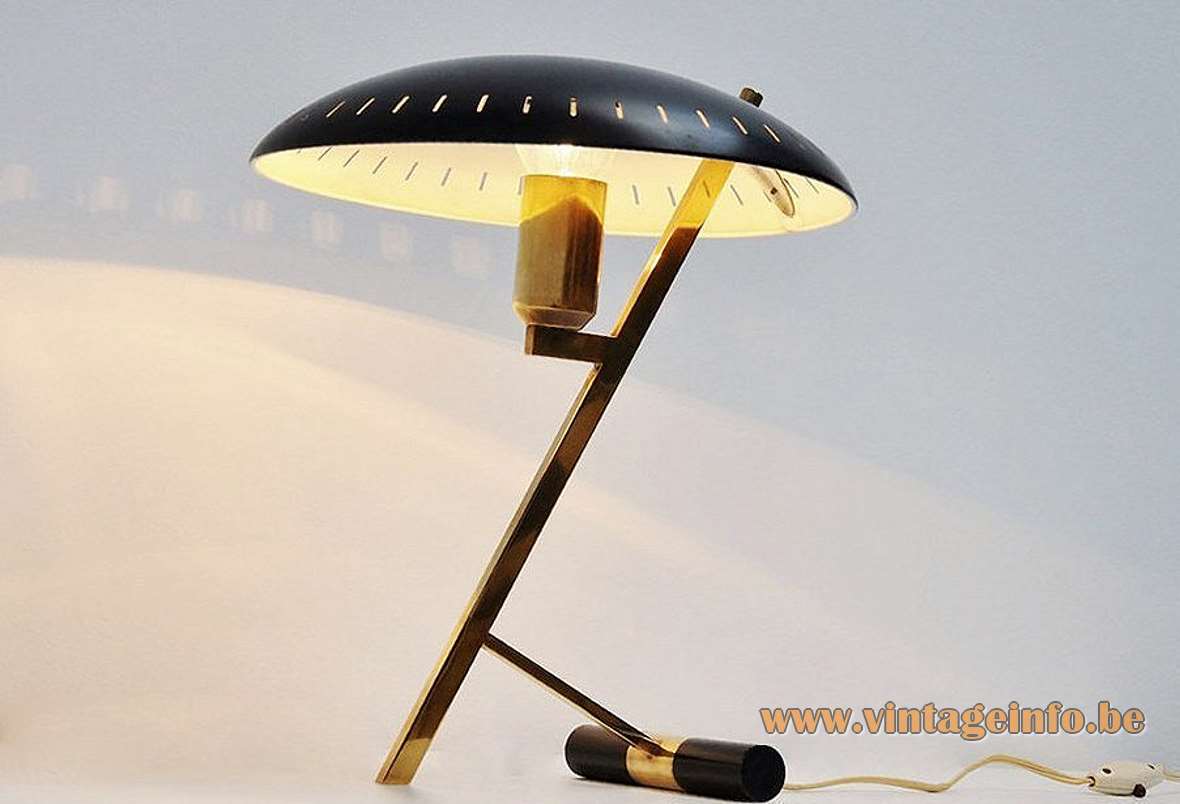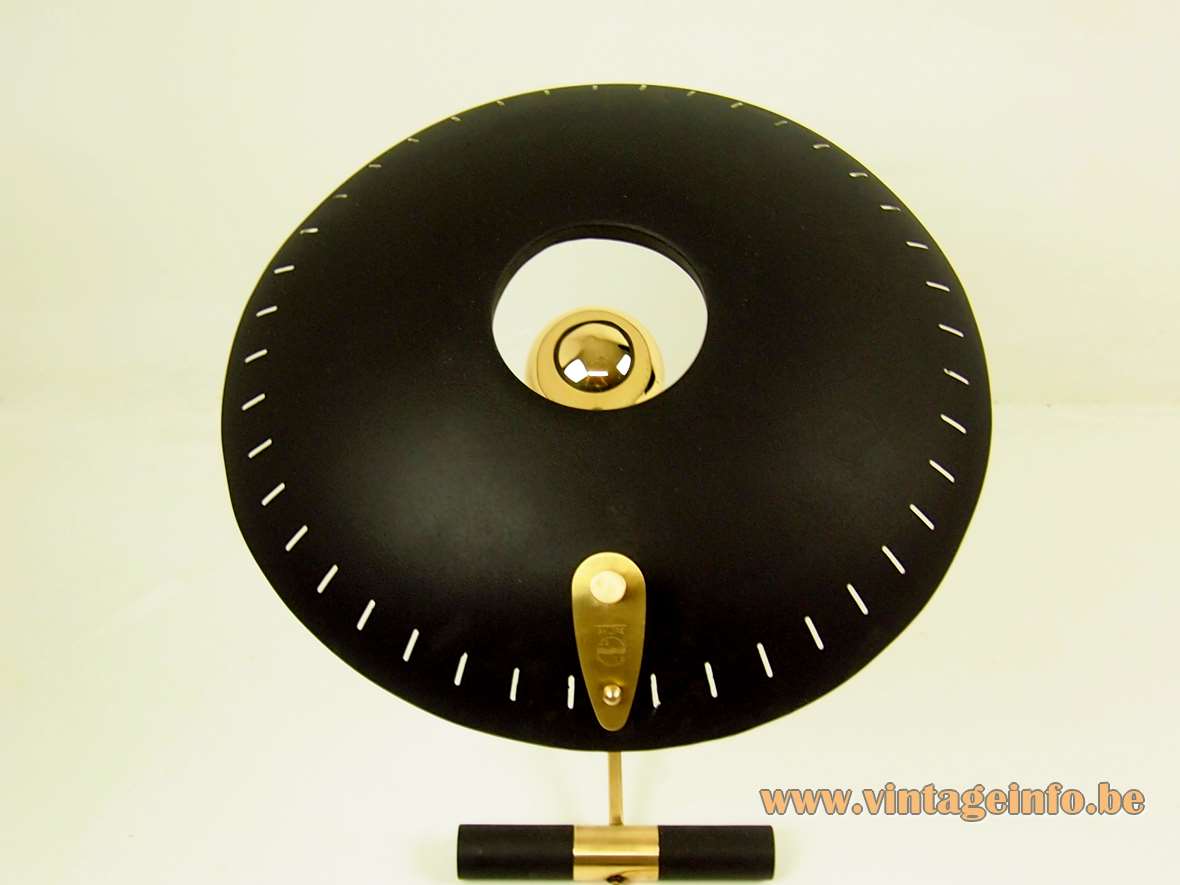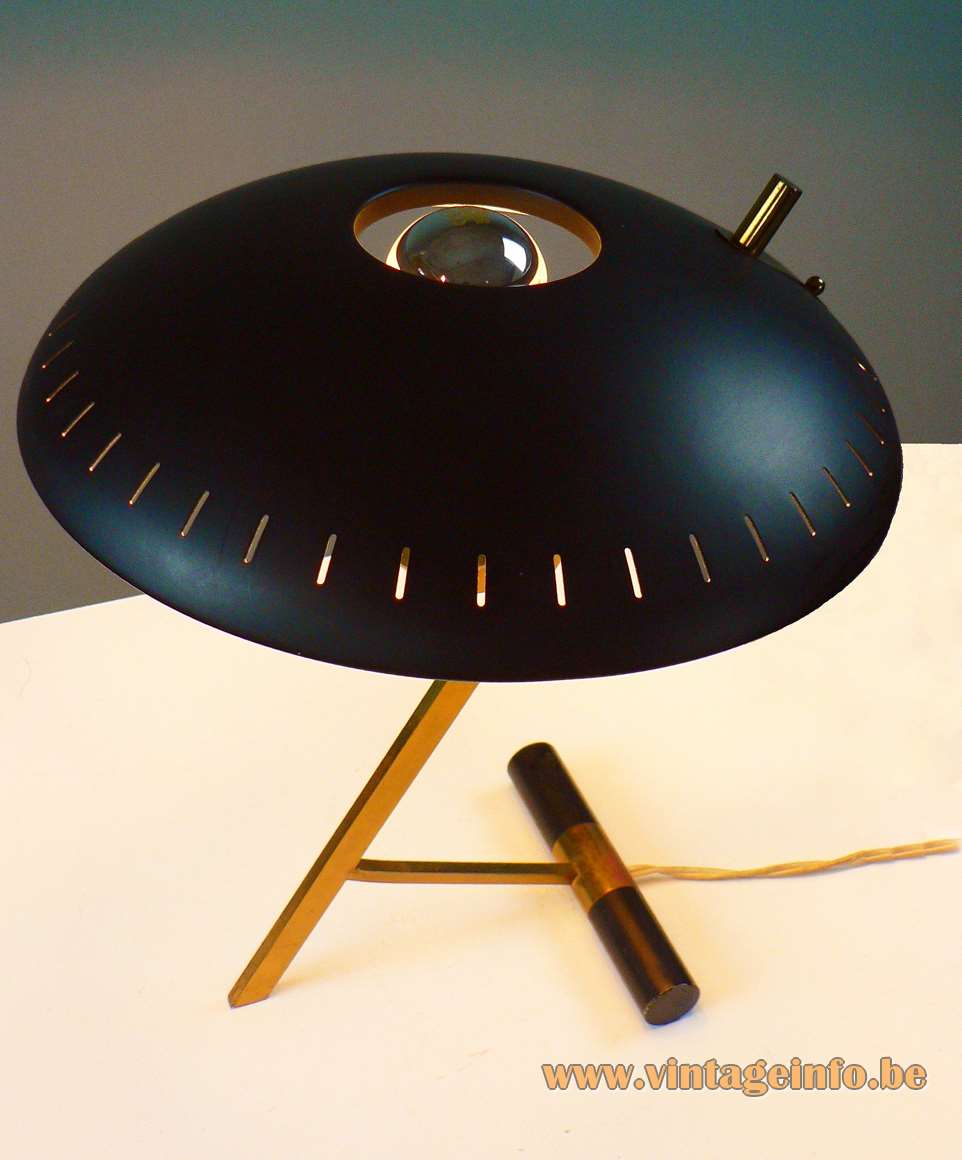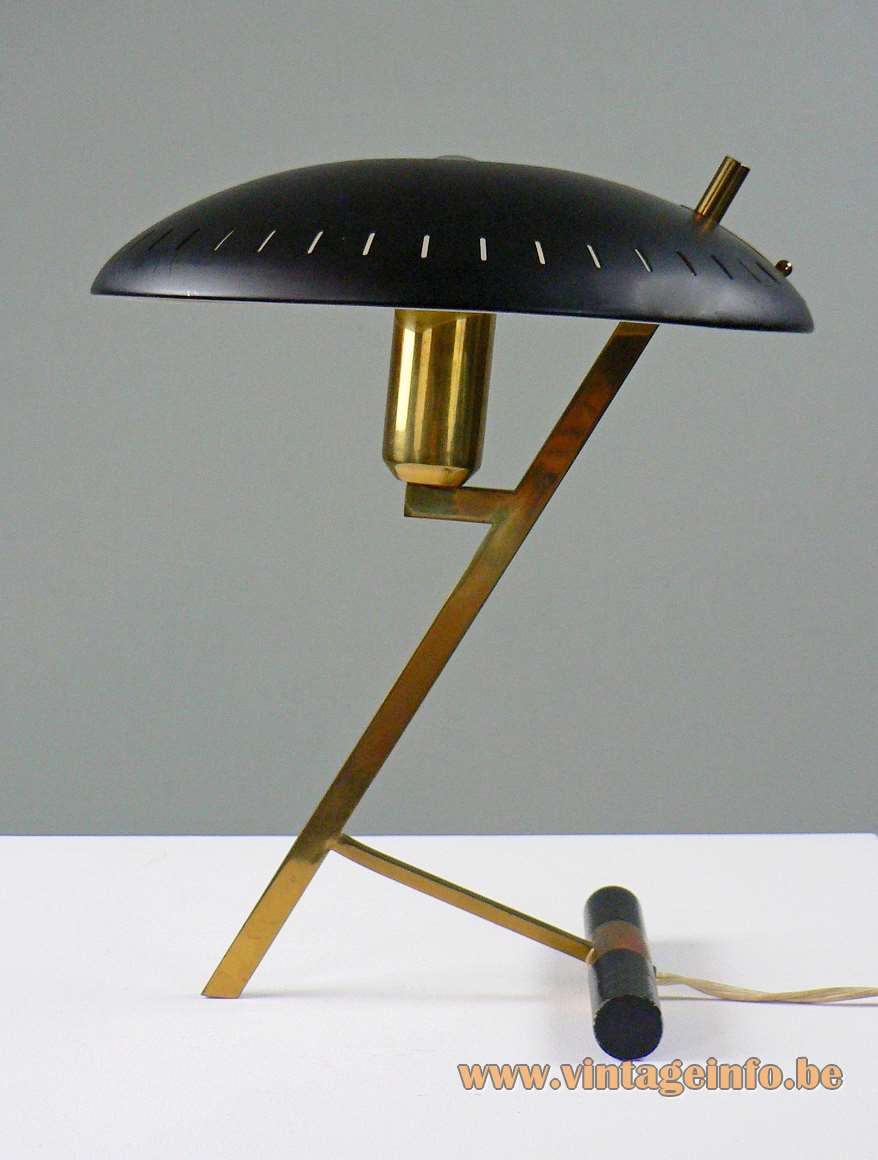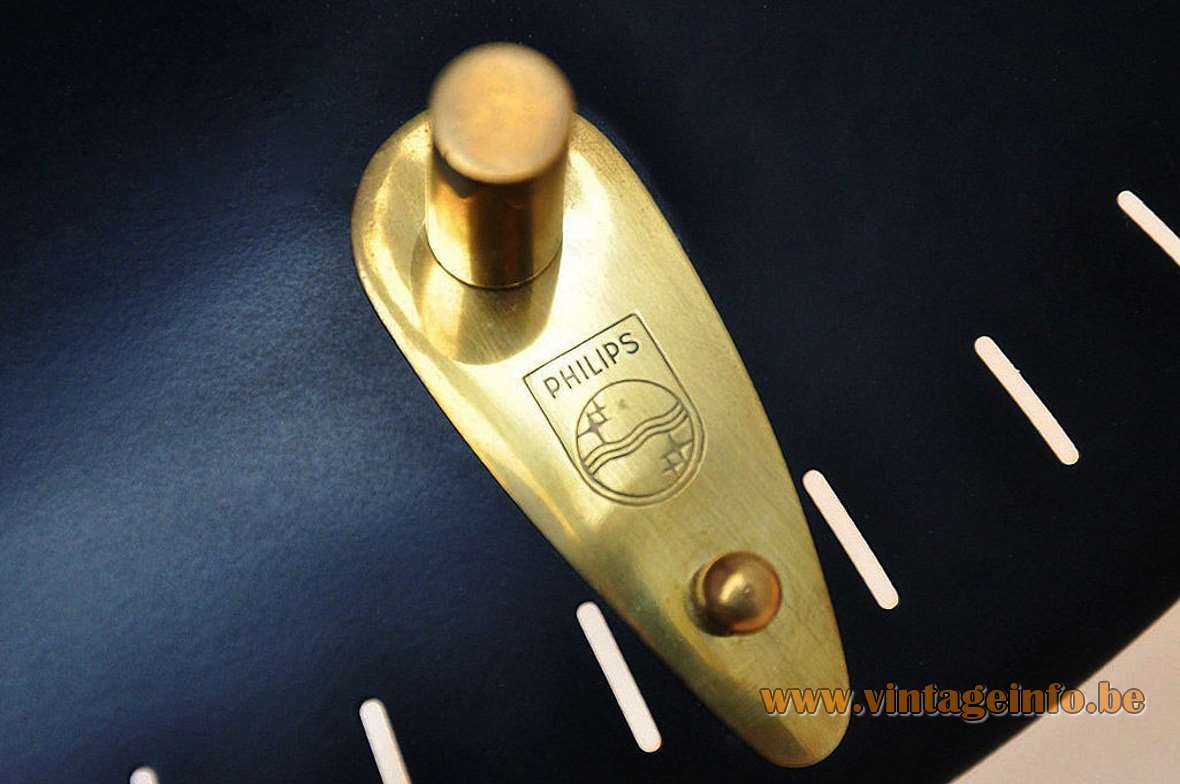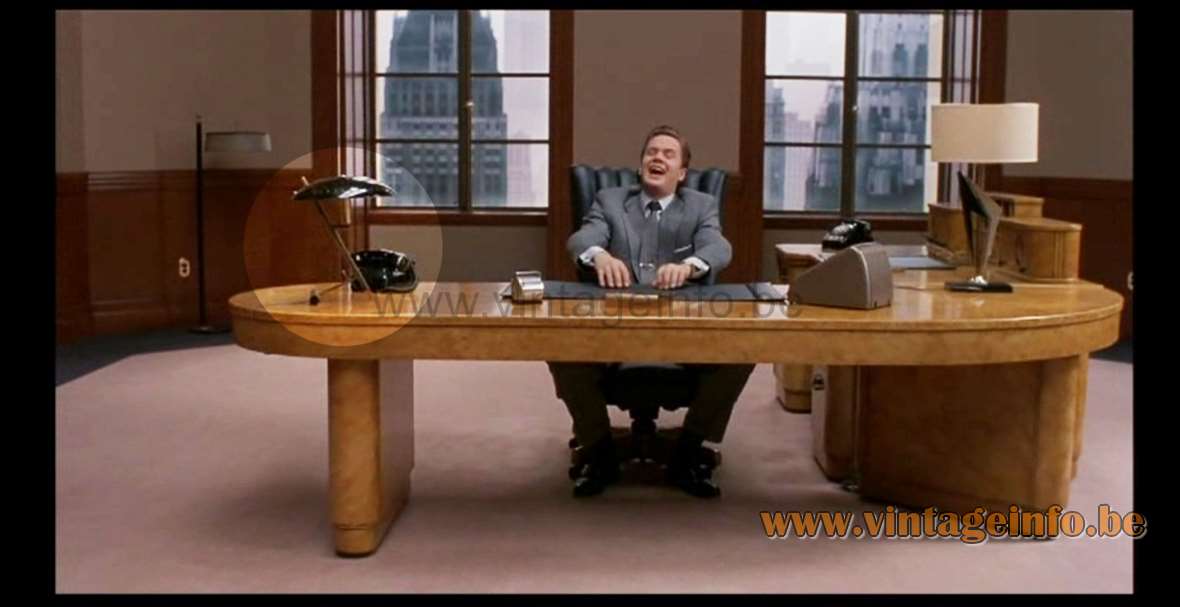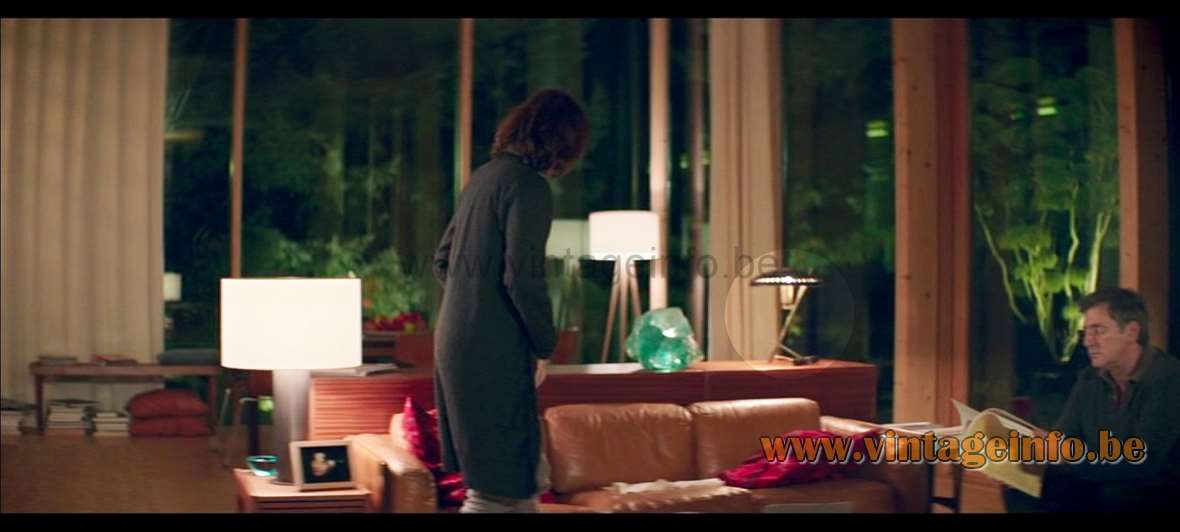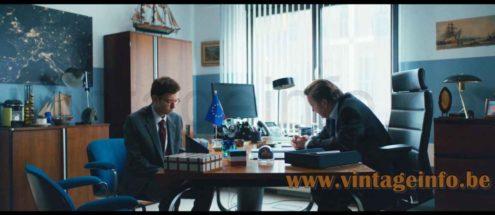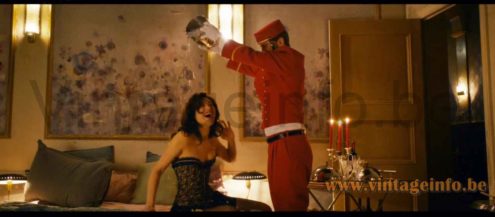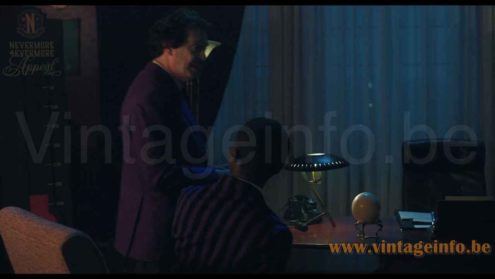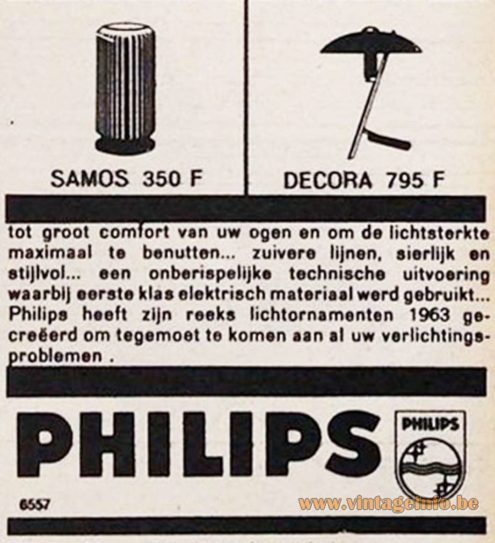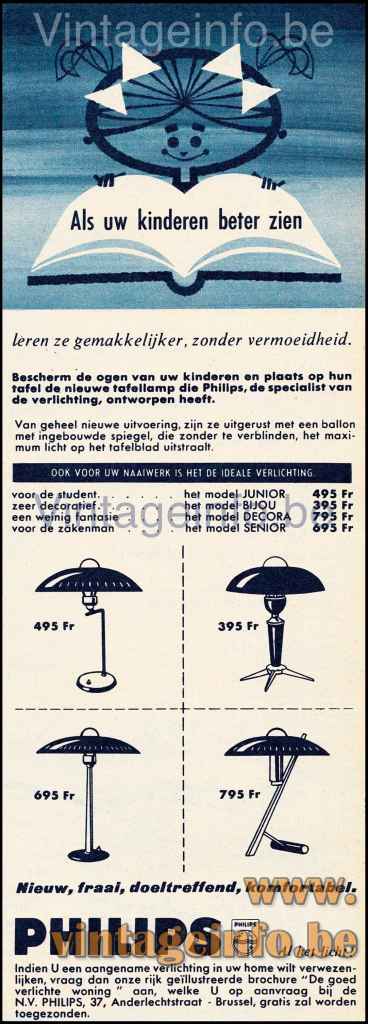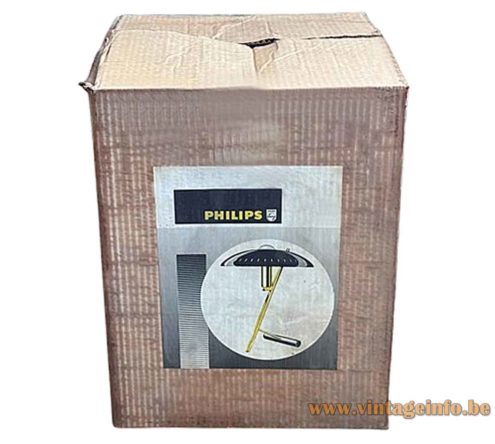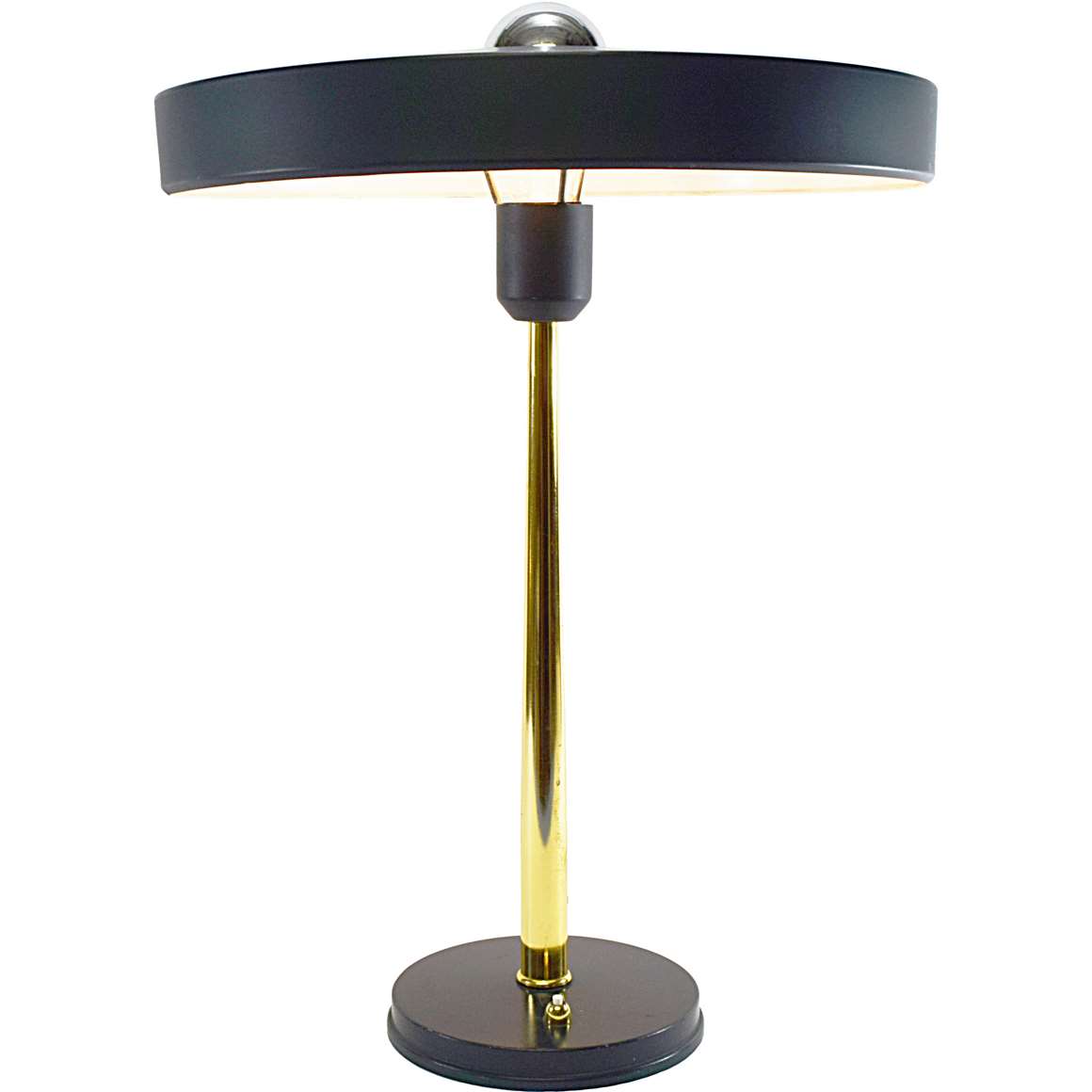Lamps In The Movies
The Hudsucker Proxy (1994)
A Philips Decora desk lamp was used as a set decoration in the 1994 film The Hudsucker Proxy. Starring Tim Robbins, Paul Newman and Jennifer Jason Leigh. Produced and directed by Joel and Ethan Coen.
Avant l’Hiver (2013)
A Philips Decora desk lamp was used as a set decoration in the French drama film Avant l’Hiver (Before the Winter Chill) from 2013. Starring Daniel Auteuil, Kristin Scott Thomas and Leïla Bekhti. The movie was directed by Philippe Claudel.
Parlement (2020)
A Philips Decora desk lamp was used as a set decoration in the 2020 French, German and Belgian comedy television series Parlement. Here in series 1, episode 1. Starring Xavier Lacaille, Liz Kingsman and Lucas Englander. The two other lamps are probably made by ANVIA (left) and maybe Jumo (middle).
The Room (2019)
Two Philips Decora desk lamps were used as a set decoration in the 2019 English-language French thriller film The Room. Starring Olga Kurylenko, Kevin Janssens and Carole Weyers.
Wednesday (2022 – 2025)
A Philips Decora desk lamp was used as a set decoration in the 2022 -2025 American coming-of-age supernatural comedy horror Netflix television series Wednesday. Here in season 2, episode 1. Starring Jenna Ortega, Gwendoline Christie and Riki Lindhome. Several other nice lamps appear in this series. For instance a fibreglass rocket floor lamp and a Jieldé work lamp.
Links (external links open in a new window)
The complete history of the company on the Philips website
Louis Kalff – Wikipedia (only in Dutch)
The Evoluon building – Wikipedia
Website of the Philips Museum in Eindhoven
The Hudsucker Proxy (1994) – Wikipedia
The Hudsucker Proxy (1994) – IMDb
Avant l’Hiver (2013) – Wikipedia
The Room (2019) film – Wikipedia
Parlement (2020) TV series – Wikipedia
Parlement (2020) TV series – IMDb
Wednesday (2022 -2025) TV series – Wikipedia
Wednesday (2022 – 2025) TV series – IMDb
Vintageinfo
Diplomat desk lamp – later version of the Decora
Many thanks to Ger for the pictures.
Many thanks to Volksen for the screenshot of the Parlement TV series.
Many thanks to Fons for the photo of the box.
Many thanks to Eric for the advertisement scan.
Philips Decora Desk Lamp
Materials: Black painted thick round brass rod counterweight used as a base. Rectangular brass slats & 1 round brass rod. Mat black painted aluminium UFO style mushroom lampshade, painted white on the inside. It is perforated with many elongated slots and a hole in the middle. Brass socket holder. Bakelite E27 socket.
Height: 40 cm / 15.74”
Width: ∅ 35 cm / 13.77”
Electricity: 1 bulb E27, 1 x 100 watt maximum, 110/220 volt.
Any type of light bulb can be used. A big silver cup/crown/bowl bulb is preferred. There is a difference in sizes between 60 and 100 watt incandescent light bulbs. The 100 watt bulb is preferred.
Period: 1950s, 1960s – Mid-Century Modern.
Designer: To be appraised.
Manufacturer:Philips, Eindhoven, The Netherlands.
Other versions: The Philips Decora desk lamp exists in several colours. Made in some slight variations over the years.
Often named Z-lamp, the reason is clear. The real name is Decora. It was designed in 1956. The successor of the Decora desk lamp is the Diplomat. It has a straight lampshade, not curved and it is without the elongated slots. It was made from the late 60s until the early 80s. You can find it over here on Vintageinfo. Same desk lamp, different lampshade.
Louis Christiaan Kalff (1897–1976)
Louis Kalff (Amsterdam, 14 November 1897 – Waalre, 16 September 1976) was the designer and art director who, more than anyone else, gave Philips a modern visual identity in the 1920s and 1930s. From 1925 onwards he worked at the Philips advertising department in Eindhoven, where he was asked to make the company’s advertising and presentation match the size and ambitions of the firm.
Philips house style and logo
When Kalff arrived, the name “Philips ” was written in many different ways. He standardised the lettering, the colours (he liked strong primary colours) and the overall layout of advertisements and packaging. In the second half of the 1920s he introduced the combination of waves and stars as symbols for radio transmission, first on packaging and later on products. In 1938 he brought the wordmark and the emblem together in the familiar Philips shield – one of his best-known contributions.
Besides the work for Philips he designed posters and graphic work for the Holland-America Line, Calvé, Zeebad Scheveningen, Holland Radio and others, always in the same clear, modern idiom.
Lighting and the LIBU (1929)
Because electric lighting in architecture was developing very fast, Kalff founded the Lichtadviesbureau (LIBU) in 1929. That bureau advised architects, municipalities and companies on how to use light in buildings, shops and public space. It did not only push Philips products, it also looked at what the market needed. Through the LIBU, Kalff organised the lighting for several world exhibitions, among them Barcelona, Antwerp and Paris.
From advertising to industrial design
After the Second World War the earlier “artistic propaganda” work inside Philips evolved into a broader industrial design service, later known as ARTO. Kalff was closely involved in this and for years he supervised the styling of radios, loudspeakers, domestic appliances and professional lighting installations. New products were often “kalfft ” first – checked for function, for looks and for recognisability as a Philips product.
Did he design the Philips lamps?
Many 1950s Philips lamps are offered today as “Louis Kalff ”. That sounds attractive, but it is not supported by Philips documentation. Kalff organised the lighting and design departments (LIBU, later ARTO), he approved designs and he set the taste, but there is no primary source that attributes specific desk or floor lamps to him personally. The similarity between his later architectural work (Evoluon) and some saucer-shaped Philips lamps, such as the Decora, Senior and Junior, simply shows that the same visual language was used inside Philips.
The story that he also designed lamps for German makers such as Cosack / Gecos is another internet repeat and has, as far as we know, no documentary basis.
Safer wording: “Philips lighting of the 1950s was developed within the design organisation created and led by Louis Kalff, but no individual lamp models can be firmly attributed to him.”
Architecture and later work
Next to graphic work Kalff also designed and co-designed buildings for Philips, such as the Dr. A.F. Philips Observatory in Eindhoven (1937) and houses for Philips directors. After his retirement in 1960 he remained active as advisor and architect. His best-known late project is the Evoluon in Eindhoven (opened 1966), designed with Leo de Bever, a futuristic disc-shaped building that perfectly fits the forward-looking image he had promoted at Philips for four decades.
Louis Kalff passed away in Waalre on 16 September 1976.
Koninklijke Philips N.V.
Inspired by the fast-growing electricity industry and by the promising results of Gerard Philips’ own experiments with reliable carbon filaments, his father, the Jewish banker Frederik Philips from Zaltbommel, financed the purchase of a small factory in Eindhoven, the Netherlands, on 15 May 1891.
The first years were difficult and the company was close to bankruptcy, but in 1895 Gerard’s younger brother Anton Philips joined the firm. With Anton’s commercial drive the family business expanded very quickly and the Philips brothers turned the lamp factory into the basis of what would become a major international electronics company.
To secure the supply of lamp parts, Philips very early started to make things in-house: its own machines, its own glass (from 1916) and even its own gas separation to fill lamps with argon, so it was less dependent on German suppliers during wartime. This strong vertical integration became typical for Philips and later also supported radio and medical products.
From the 1920s onward Philips did not only make lamps but also radios and even ran its own shortwave stations (PCJ and PHOHI) to promote them worldwide – an early mix of product and broadcasting.
In later sources the “first Philips shaver” is sometimes put in the early 1930s, but Philips itself dates the electric Philishave to 1939; in any case it shows how the company moved from lighting into small household and personal devices.
On 9 May 1940, the day before the German invasion, the Philips family left for the United States with a large part of the company’s capital. From there they continued operations as the North American Philips Company and kept control over the group during the war. After 1945 the headquarters returned to the Netherlands, again in Eindhoven.
After the war Philips became a broad technology group: radios, televisions, X-ray and medical equipment, and of course lighting, which remained one of its core businesses for decades. Only much later, in 2016, the lighting activities were split off and continued under the name Signify – all vintage Philips luminaires on this site belong to the period when lighting was still an integral part of Philips.
Today Philips is mainly a health-technology company. The roots are still in Eindhoven, but since 2025 the head office is in Amsterdam (Prinses Irenestraat 59).
Philips Decora Desk Lamp
Belgian advertisement from 1963, price 795 BEF, +- 20 Euro. An expensive lamp at that time.
Translated text:
For the great comfort of your eyes and to make the most of the light intensity… pure lines, elegant and stylish… a flawless technical design using first-class electrical materials…
Philips has created its 1963 range of lighting ornaments to meet all your lighting needs.
Philips Decora Desk Lamp
Translated text of this 1960Belgian advertisement:
When your children see better
they learn more easily, without fatigue.
Protect your children’s eyes and place on their desk the new table lamp designed by Philips, the specialist in lighting.
Of completely new design, they are equipped with a shade containing a built-in mirror, which, without dazzling, emits the maximum amount of light onto the tabletop.
ALSO THE IDEAL LIGHTING FOR YOUR SEWING WORK.
for the student…… model JUNIOR 495 Fr
very decorative…… model BIJOU 395 Fr
a touch of fantasy…… model DECORA 795 Fr
for the businessman…… model SENIOR 695 Fr
New, beautiful, efficient, comfortable.
PHILIPS
All the light!
If you wish to achieve pleasant lighting in your home, ask for our richly illustrated brochure
“The well-lit home”, which will be sent to you free of charge upon request from
N.V. PHILIPS, 37 Anderlechtstraat – Brussels.
